Bradford City’s Valley Parade - a ground touched by triumph and tragedy
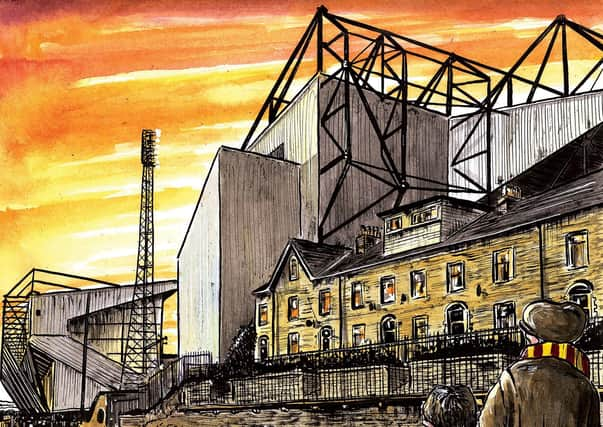

The darkness deepens, Lord with me abide.
Those solemn words to Henry Francis Lyte’s hymn will forever chime with Bradfordians and many from across the Ridings and beyond to commemorate the 56 supporters who perished on that appalling day at Valley Parade on May 11, 1985.
The story of the home of Bradford City is one that is interwoven with tragedy in the wool city.
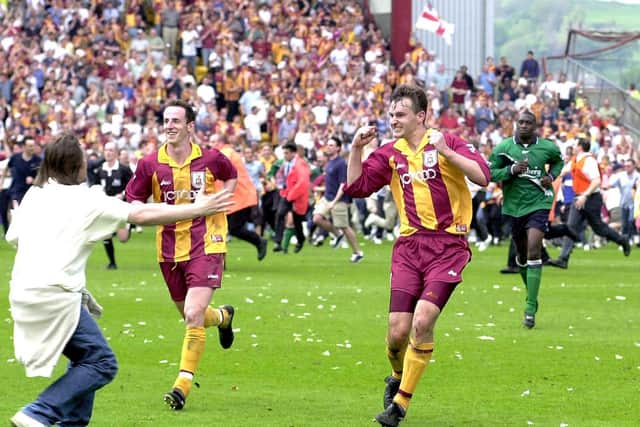

Advertisement
Hide AdAdvertisement
Hide AdThat harrowing time represented one of British football’s darkest hours. It will never be forgotten.
On-pitch moments of sunshine, Cup shocks and Everyman characters also form part of the Valley Parade tapestry and the place where the claret and amber belong has packed in plenty at a venue which has changed irrevocably since the mid-Eighties.
Much earlier, another sporting tragedy – the Burnden Park disaster of 1946 – had changed the face of the ground with the Midland Road Stand condemned on account of safety concerns relating to steep exit stairways to the road below.
It was replaced by a much narrower ‘cowshed’ terrace with the cooling towers and chimney of the old Valley Road power station omnipresent in the background until they were demolished during the Seventies.
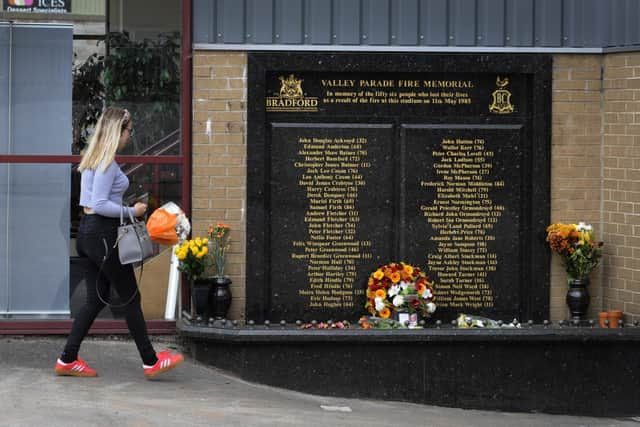

Advertisement
Hide AdAdvertisement
Hide AdMore seasoned City followers will also recall the open Bradford End – it was roofed in 1961, with the Kop at the other end of the ground remaining without a roof until the ground’s reopening in late 1986.
For those who can remember being exposed to the elements in the Fifties and early Sixties, the sight of City reprising the club’s famed Cup exploits of much earlier will have warmed the soul.
Everton were beaten 3-0 in an FA Cup third round shock in 1959-60. Two rounds later, a crowd of 26,227 saw champions-elect Burnley toil in the Valley Parade mud before salvaging a replay thanks to two late goals.
Valley Parade was the preserve of Derek Stokes, David ‘Bronco’ Layne and John McCole during that late Fifties and early Sixties era – alongside a young Trevor Hockey. But it was another decade which underwhelmed.
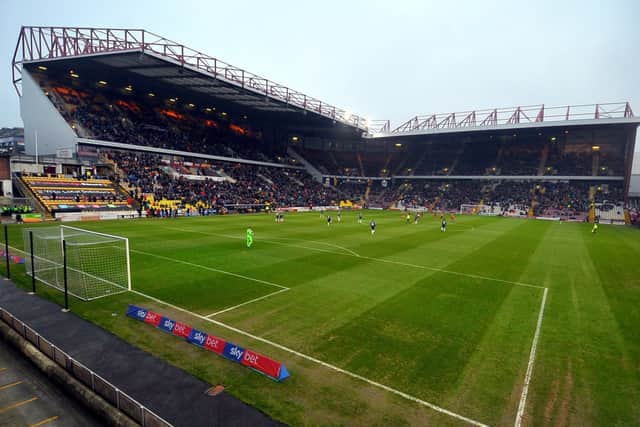

Advertisement
Hide AdAdvertisement
Hide AdPromotion to the third tier in 1968-69 under Jimmy Wheeler– a time when the likes of Bruce Bannister, Bobby Ham, Tom Hallett and John Hall held court – provided the main highlight, but it took the arrival of a star-studded Spurs side just three days into the new decade on January 3, 1970 for Valley Parade to enjoy its place in the sun again.
It was a Cup occasion when the phrase ‘Nice One Cyril’ would not have gone down too well with the City faithful among a 23,000-plus crowd. A goalline clearance from Spurs defender Cyril Knowles denied the hosts a memorable victory in a 2-2 draw. But at least City were back.
There was, of course, controversy in Valley Parade’s next big Cup occasion in March, 1976 .
Then in the fourth division, City – under the command of Bobby Kennedy – lost out 1-0 in a quarter-final against eventual winners Southampton when Jim McCalliog fired a free-kick past stalwart goalkeeper, the late Peter Downsborough.
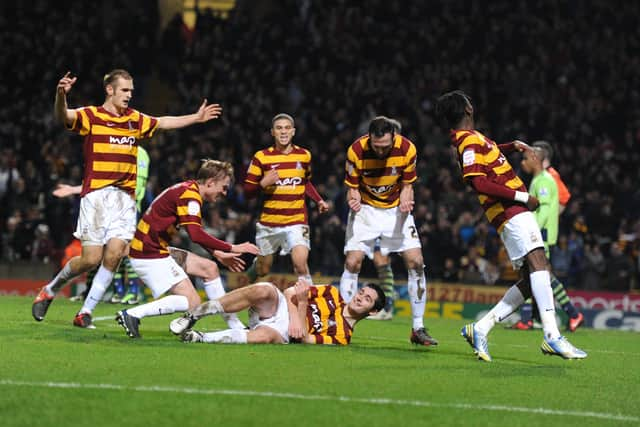

Advertisement
Hide AdAdvertisement
Hide AdMatch of the Day commentator John Motson called the goal – a volley following a flicked assist by Peter Osgood – as ‘cheeky’.
City supporters would have used a different word, with the technique later outlawed.
In a growing multi-cultural era in Bradford, two legends in Ces Podd and Joe Cooke would be part of a City line-up who sampled promotion in 1976-77.
Another great in the shape of a larger-than-life Ulsterman whose passing came far too soon would provide the headlines on a feted Valley Parade night in 1980.
Advertisement
Hide AdAdvertisement
Hide AdBob Paisley’s all-conquering Liverpool line-up were beaten 1-0 in a huge League Cup upset, thanks to a strike from Bobby Campbell in front of a heaving Bradford End.
It was one of 143 goals that City’s irrepressible all-time top-scorer would register in two spells at his beloved Bradford – which encompassed promotions in 1981-82 under Roy McFarland and 1984-85 when the late, great Trevor Cherry was in the Valley Parade dug-out.
Boys such as Stuart McCall, John Hendrie, Peter Jackson, Greg Abbott and Mark Ellis would turn to men, forged by the off-the-field adversity of the club nearly going under in 1983.
Sadly, more distressing times which would leave an indelible mark on their lives and many others were around the corner on the stadium’s gravest day.
Advertisement
Hide AdAdvertisement
Hide AdIt was a time which should have been one of celebration with 11,076 fans present to see City be crowned as Division Three champions on the final day of the 1984-85 season against Lincoln City.
Ahead of the game, proud Bradford lad Peter Jackson lifted the trophy, City’s first title since 1928-29. Then shortly before half-time, the party turned to tragedy after a devastating fire – which a Government inquiry concluded spread ‘faster than a man could run’ – ripped through the antiquated main stand.
A planned £400,000 overhaul was due to see a new roof installed, the old wooden seats replaced and the entire area concreted, with work due to start on the Monday – just two days after that final game as City prepared for a return to second-tier for the first time since 1937.
Bradford remembers the ‘56’ each year on May 11 and a memorial with the names of those who lost their lives stands at the ground.
Advertisement
Hide AdAdvertisement
Hide AdCity would play all their home fixtures in 1985-86 and the first half of the following season at Odsal, Leeds Road and Elland Road before coming home after their nomadic experience.
A full-house of 15,000 would see the hosts play an England XI managed by Bobby Robson on December 14, 1986 – some 582 days on from the appalling fire.
That winter day was, in the words of then chairman Stafford Heginbotham, the day that the club ‘had come to life again’.
City – under the command of former midfielder Terry Dolan – would go tantalisingly close to promotion to the big time in a famous 1987-88 campaign.
Advertisement
Hide AdAdvertisement
Hide AdIt was a season when those of a Bradford persuasion and many neutrals were willing on the club to achieve what would have been the most emotional of promotions in their first full season back at Valley Parade.
A bitter home loss to Ipswich Town in May, 1988 scuppered that prospect and it was at Molineux 11 years later where City secured top-flight football to end a 77-year wait.
City’s time in the Premier League was brief, but possessed elements of gold all the same.
That Benito Carbone-inspired win over Chelsea which had fans dreaming. That David Wetherall moment to clinch safety against Liverpool, complete with an emotion-fuelled chorus of ‘You’ll Never Walk Alone’ after the game from both sets of fans.
Advertisement
Hide AdAdvertisement
Hide AdA stirring rendition would also be heard last summer in a sell-out fund-raising fixture between two clubs – in front of the biggest crowd since Valley Parade was rebuilt after the fire. The chants of ‘Stephen Darby baby’ will similarly live long in the memory.
It was an occasion which showed BD8 at its best as did those feted League Cup moments in the winter of 2012-13.
Truly magical nights against Arsenal and Aston Villa – a time of Duke, Wells, McArdle, Thompson and the local lad who used to work at the Co-op – provided footballing romance by the bucketload.
Valley Parade. A stadium which has seen it all.
Editor’s note: First and foremost - and rarely have I written down these words with more sincerity - I hope this finds you well.
Advertisement
Hide AdAdvertisement
Hide AdAlmost certainly you are here because you value the quality and the integrity of the journalism produced by The Yorkshire Post’s journalists - almost all of which live alongside you in Yorkshire, spending the wages they earn with Yorkshire businesses - who last year took this title to the industry watchdog’s Most Trusted Newspaper in Britain accolade.
And that is why I must make an urgent request of you: as advertising revenue declines, your support becomes evermore crucial to the maintenance of the journalistic standards expected of The Yorkshire Post. If you can, safely, please buy a paper or take up a subscription. We want to continue to make you proud of Yorkshire’s National Newspaper but we are going to need your help.
Postal subscription copies can be ordered by calling 0330 4030066 or by emailing [email protected]. Vouchers, to be exchanged at retail sales outlets - our newsagents need you, too - can be subscribed to by contacting subscriptions on 0330 1235950 or by visiting www.localsubsplus.co.uk where you should select The Yorkshire Post from the list of titles available.
If you want to help right now, download our tablet app from the App / Play Stores. Every contribution you make helps to provide this county with the best regional journalism in the country.
Sincerely. Thank you. James Mitchinson, Editor
Comment Guidelines
National World encourages reader discussion on our stories. User feedback, insights and back-and-forth exchanges add a rich layer of context to reporting. Please review our Community Guidelines before commenting.